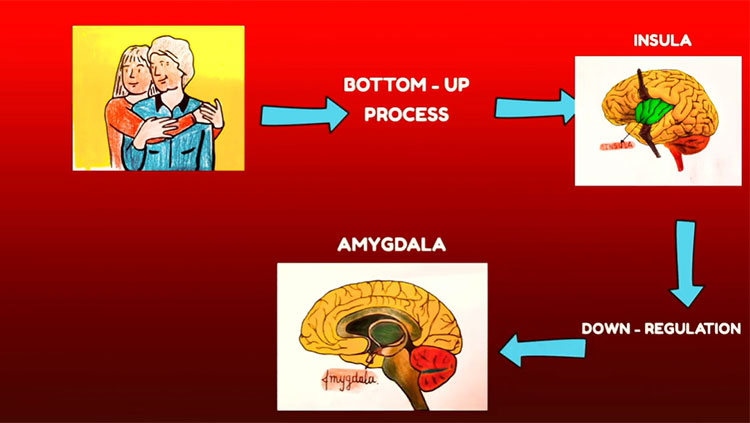What is an itch? That insistent tickle demanding that you cease whatever you are doing and claw with your fingernails at a particular spot on your skin. It can come from anywhere -- the top of your head to the soles of your feet -- inside your ear to your eyeballs. NOTHING will satisfy an itch except scratching it.

Sometimes scratching doesn’t stop a nagging itch and you can claw your skin bloody and raw trying to satisfy the ceaseless urge -- mosquito bites, poison ivy, “don’t pick that scab!” Itching can lead to misery when it is associated with disorders such as eczema, an irritating skin rash.
Now neuroscientists from Johns Hopkins University can answer this prickly question -- itching comes from a unique type of nerve cell that seems to exist for only one reason -- to make us itch. So an itch is not some variation of pain or touch -- those sensations are the job of different kinds of neurons.
The sense of touch
One of the most important functions of the skin is to sense the environment through touch and temperature, and to alert us to injury with the urgent alarm of pain. All of these sensations derive from specialized sensors (nerve endings) in the skin that generate neural impulses (action potentials). These signals are transmitted through long sensory nerves that squeeze through the space between each of the bones in our backbone (vertebrae) to enter the spinal cord. The sensory neurons are not located in the skin or the brain, but rather they are bundled like marbles in tiny sacks tucked next to each vertebra in a row down the left and right side of the spinal cord. Like marbles, sensory neurons come in many different varieties and sizes.
Each sensory neuron in the sack has two sprouts: one fiber receives signals from the skin and the other sprout connects to the spinal cord. After entering the spinal cord the sensory fibers relay signals to other neurons that transmit the messages to the appropriate part of the brain for analyzing different types of sensation from our skin, for example, light touch, a tickle, deep pressure, pain, heat, or cold.
An itch might not be a unique sense, but rather itching could be a flavor of the many sensations communicated by other sensory neurons. Alternatively, there might be one special type of sensory neuron that does nothing other than generate the sensation of itch when it detected something like a bug crawling on our skin or a chemical in a noxious plant. How, looking at the enormous variety of neuronal “marbles” in the sensory neuron sacks could you determine if only one type was responsible for itch?
Tracking down the itchy neurons
In previous research neuroscientists Liang Han and colleagues noticed that some of the sensory neurons in the sacks had a unique protein receptor on them known by the initials, Mrgpr. This protein was known to be a receptor molecule on the cell membrane that responds to certain chemicals in the environment, including several substances that cause itching.
Using genetic engineering, the scientists generated a mouse in which these receptor proteins emitted red fluorescent light so that the researchers could see where in the brain and body these receptors are located. When they looked through the microscope the scientists saw some tiny neurons in the sensory neuron sacks glowing red, but most sensory neurons did not emit the red light, indicating that most of them lacked the protein. No other cells in the brain or body shined with the marker for Mrgpr protein.
This strongly supported their hypothesis that a special type of neuron could be responsible for the sensation of itch and that the Mrgpr protein on the surface of these cells was a critical part of the sensory apparatus that generates itch in response to certain chemicals.
This evidence, while compelling, is far from proof, however. So the researchers traced out the sensory fibers from these fluorescent red neurons to see where their nerve endings terminated. All of these fibers ended in the skin. The rest of the body, including lung, heart, stomach, and muscle had no traces of these nerve endings. This is exactly what one would expect of a neuron that received itch-producing stimulation from the skin. Following the other sprout from the neuron leading into the spinal cord they found that all the fluorescent red fibers connected to spinal cord neurons in circuits that were known to be dedicated to scratching behavior.
So the wiring diagram of these sensory neurons fit with the hypothesis that they could be “itch neurons,” but do these nerve cells actually respond to substances that cause itching? To test this hypothesis, the investigators applied chemicals that stimulate itching behavior (chloroquinine, for example), and they saw that a gene in the neurons, c-Fos became switched on. This gene is known to respond to stimulation and activate cellular responses to many kinds of environmental signals in many types of cells.
The c-Fos marker indicated that the Mrgpr neurons had responded to the itch-producing chemical. Interestingly, applying hot water, or other noxious stimuli failed to activate c-Fos in these neurons, indicating that they were tuned to respond specifically to itch-provoking chemicals. This conclusion was confirmed by using electrodes to monitor electrical signals transmitted by sensory neurons when they are stimulated. Only chemicals that were known to cause itching provoked these particular sensory neurons to fire action potentials. Capsaicin, the potent substance in hot peppers that produces fiery pain, for example, did not stimulate impulses in the Mrgpr neurons, but the hot-pepper juice caused other sensory neurons to fire intensely.
The final proof of their hypothesis came from further genetic engineering that selectively killed the entire population of Mrgpr neurons in mice while leaving all the other neuronal “marbles” in the sacks of sensory neurons intact. Tests showed that these mice lost the scratching behavior that is induced by many different itch-producing chemicals as well as dry skin and allergic itch, but these mice showed no changes at all in responding to touch or pain-producing stimulation.
This result shows that Mrgpr-containing neurons are essential for the sensation of itch, but the evidence does not rule out the possibility that these neurons might also respond to other sensations as well. To test answer this more demanding question one would need to stimulate Mrgpr neurons specifically, without stimulating any other kind of sensory neurons, and see if some other behaviors, such as wincing in pain were induced.
To accomplish this, the neuroscientists engineered a different receptor protein that responds to capsaicin into the Mrgpr neurons. As mentioned, capsaicin stimulates other sensory neurons to generate the intense heat and pain of eating a hot pepper, but they did this in a mutant mouse that lacked the capsaicin receptor in all other cells. Now the only neurons that would be stimulated by capsaicin in these mice would be the Mrgpr-containing neurons. If they injected capsaicin into a tiny spot in the skin, the mouse should start to scratch it rather than react in pain, which is exactly what happened.
Now we know that one particular kind of sensory neuron is responsible for the sensation of itch, and that itch is distinct from other kinds of touch or temperature sensation. We also know what protein receptor molecule stimulates these neurons to fire action potentials (Mrgpr) so in the future we will be able to put away dubious home remedies and apply a new drug that will silence the raging itch of poison ivy or eczema without affecting any other senses.
CONTENT PROVIDED BY
BrainFacts/SfN
References
Han, L., et al., (2012). A subpopulation of nociceptors specifically linked to itch. Nature Neuroscience doi:10.1038/nn.3289
`

















